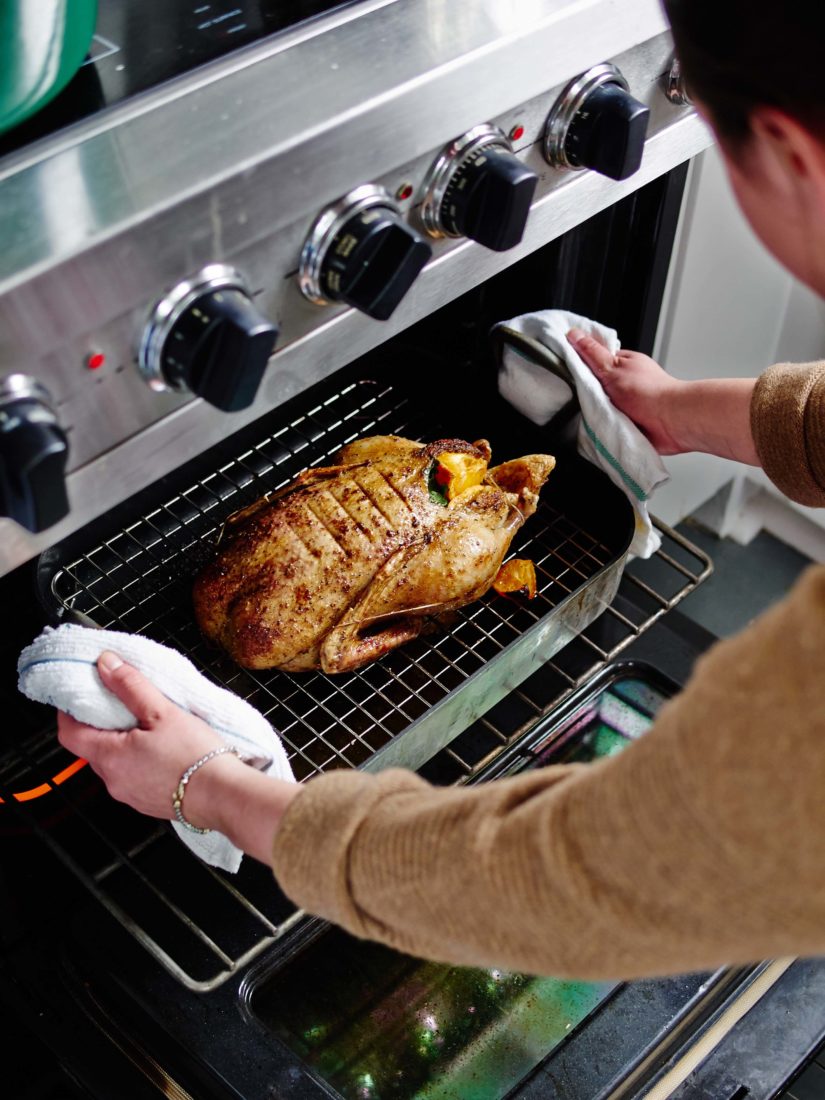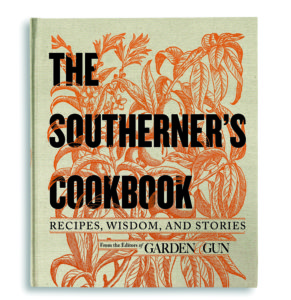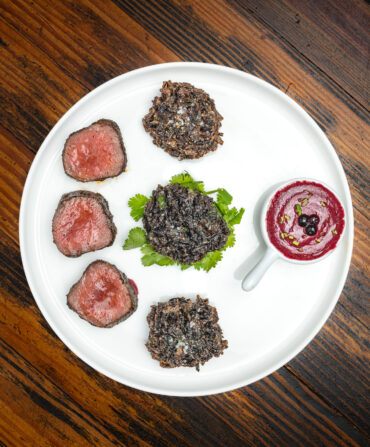Duck and orange make for a natural pairing. Across the South, duck season starts in late November, almost the exact same time sweet satsumas are ripening from north Florida to east Texas. The two combine here in a centerpiece dish that can upstage any Thanksgiving turkey. If you’ve never tasted a satsuma, expect flavor that’s sweet like an orange but even more floral and fragrant, with a slight limey tang. If you can’t find satsumas, substitute clementines; they’re not as juicy, so plan to buy more if using them for this recipe. Since the meat is the main event, bigger birds like mallards work best for whole roasting, although there’s nothing wrong with a store-bought duck either. Using the neck to make a rich stock enhances every bite of the dish. This is a complicated recipe, but the results are worth the effort. You can make things easier by parboiling the duck and making the stock and sauce (minus the butter, which you’ll stir in at the end) the day before you plan to roast the bird.
Food & Drink
Duck with Satsuma Sauce
A centerpiece dish worth a little extra effort

Ingredients
-
1 (4- to 5-pound) duck, thawed if frozen
3 celery stalks, chopped
1 carrot, cut into chunks
6 small shallots
1/2 cup white wine
4 scallions, thinly sliced
1 bunch fresh parsley, stems and leaves separate
2-inch knob fresh ginger, peeled and sliced into coins
10 whole black peppercorns
10 whole coriander seeds
12 to 14 satsumas
2 teaspoons grated satsuma zest
1/4 cup Bayou rum, Bayou Satsuma Rum Liqueur, or Cointreau Noir
2 tablespoons unsalted butter
1 tablespoon kosher salt
2 teaspoons freshly ground black pepper
1 1/2 teaspoons paprika
1 teaspoon ground coriander
4 cups cooked long-grain rice, prepared according to package instructions
Preparation
Preheat the oven to 425 ̊F.
Remove the neck and giblets from the duck; discard the giblets or reserve for another use. Rinse and pat the duck dry thoroughly with paper towels and chop the neck into 1-inch pieces with a cleaver. Put the neck pieces in a small roasting pan with half of the celery, the carrot, and 1 halved shallot. Roast for 20 to 25 minutes, shaking the pan halfway through, until the neck pieces and vegetables have browned.
While the bones and vegetables are roasting, bring a large stockpot of water to a boil. Prick the skin of the duck all over with sharp fork tines almost parallel to the surface so as not to pierce the meat. Carefully slip the duck into the boiling water to submerge it and cook for 10 minutes. Remove with tongs to a plate, let cool, and pat thoroughly dry.
Remove the roasting pan from the oven and pour the wine into the pan, scraping with tongs or a spatula to remove any browned bits. Transfer the liquid and solids to a small saucepan and place over high heat. Thinly slice the remaining 5 shallots and set 2 of them aside. To the saucepan, add the 3 sliced shallots, 3 cups water, 3 scallions, parsley stems, half of the ginger, the peppercorns, and the coriander seeds. Bring to a boil, then reduce the heat to medium-low and cook until the liquid is reduced by half, about 30 minutes. Strain the liquid through a fine-mesh sieve into a heatproof bowl, pressing on the solids with the back of a spoon, and return the liquid to the saucepan. You should have about 11⁄2 cups liquid.
Zest 2 to 3 of the satsumas so you have 2 teaspoons zest. Reserving 1 satsuma for the duck, juice the remaining satsumas until you have 11⁄2 cups of juice. Add the juice to the saucepan with the strained stock and stir in the liqueur and 1 teaspoon of the zest. Simmer until reduced by half, about 10 minutes. Set aside and keep warm.
Preheat the oven to 450 ̊F.
In a small bowl, combine the remaining 1 teaspoon zest with the salt, ground pepper, paprika, and ground coriander. Sprinkle all over the bird and inside its cavity. Cut the remaining satsuma in half and stuff it in the duck cavity with the remaining celery, shallots, and ginger, and half of the parsley leaves.
Place the stuffed bird breast-side up on a wire rack set in a roasting pan and roast for 15 minutes. Lower the oven temperature to 350 ̊F and roast for 45 minutes more. Remove the duck from the oven, pour off any fat, and carefully turn breast-side down. Return to the oven and roast for 20 to 30 minutes more. Remove the duck from the oven, pour off any accumulated fat, and carefully turn the duck breast-side up. Increase the oven temperature to 450 ̊F, return the pan to the oven, and roast for 15 to 20 minutes more, until an instant-read thermometer inserted in the meaty portion of the thigh registers 175 ̊F and the duck skin is golden brown and crispy. Let the duck rest for 15 minutes before carving to allow the juices to redistribute.
Reheat the sauce over medium-low. Whisk in the butter and add the remaining scallion. Taste and adjust the seasonings if needed.
Spoon the rice onto a platter and arrange the duck pieces in the center. Spoon the sauce over the meat. Chop some of the remaining parsley and sprinkle it over the top. Serve with the remaining sauce on the side.

Recipe from Garden & Gun’s The Southerner’s Cookbook







